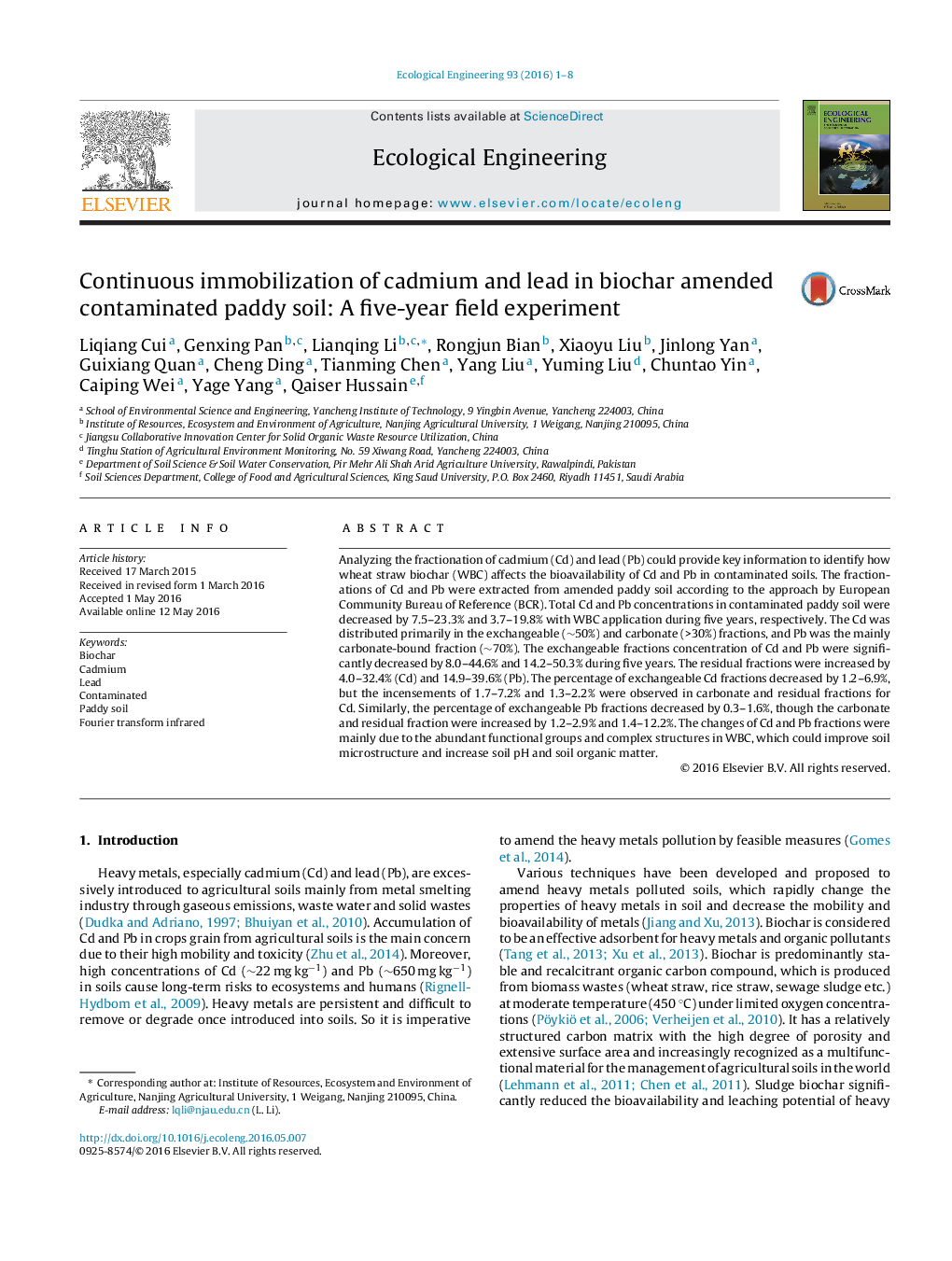| Article ID | Journal | Published Year | Pages | File Type |
|---|---|---|---|---|
| 4388705 | Ecological Engineering | 2016 | 8 Pages |
•Wheat straw biochar (WBC) consistently decreased bioavailable Cd and Pb in a contaminated paddy field during five years.•WBC consistently immobilized soil Cd and Pb in stabilized carbonate, organic and residual forms.•Functional groups and surface adsorption of WBC mainly contributed towards five years immobilization of soil Cd and Pb.
Analyzing the fractionation of cadmium (Cd) and lead (Pb) could provide key information to identify how wheat straw biochar (WBC) affects the bioavailability of Cd and Pb in contaminated soils. The fractionations of Cd and Pb were extracted from amended paddy soil according to the approach by European Community Bureau of Reference (BCR). Total Cd and Pb concentrations in contaminated paddy soil were decreased by 7.5–23.3% and 3.7–19.8% with WBC application during five years, respectively. The Cd was distributed primarily in the exchangeable (∼50%) and carbonate (>30%) fractions, and Pb was the mainly carbonate-bound fraction (∼70%). The exchangeable fractions concentration of Cd and Pb were significantly decreased by 8.0–44.6% and 14.2–50.3% during five years. The residual fractions were increased by 4.0–32.4% (Cd) and 14.9–39.6% (Pb). The percentage of exchangeable Cd fractions decreased by 1.2–6.9%, but the incensements of 1.7–7.2% and 1.3–2.2% were observed in carbonate and residual fractions for Cd. Similarly, the percentage of exchangeable Pb fractions decreased by 0.3–1.6%, though the carbonate and residual fraction were increased by 1.2–2.9% and 1.4–12.2%. The changes of Cd and Pb fractions were mainly due to the abundant functional groups and complex structures in WBC, which could improve soil microstructure and increase soil pH and soil organic matter.
